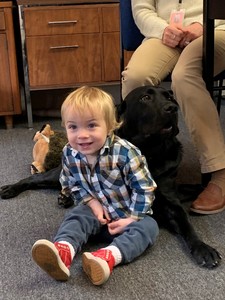Revenue for Results
By Kelly Medinger
06-17-2019
Baltimore Child Abuse Center uses human services grant to grow its grants management team in order to help heal and protect more children
 How do you double your grant revenue in a year by applying for fewer grants? Ask the Baltimore Child Abuse Center.
How do you double your grant revenue in a year by applying for fewer grants? Ask the Baltimore Child Abuse Center.
About the Center
Since 1987, Baltimore Child Abuse Center has helped children who have been abused, sexually assaulted, victimized, or witnesses to homicide. The Center, which recently joined LifeBridge Health as a wholly owned not-for-profit subsidiary, provides free services to more than 1,800 children and their non-offending caregivers every year, including medical treatment, forensic interviews, and mental health treatment.
“The violence and trauma a child suffers at the hands of adults takes its toll on their lives and social outcomes,” states LaDonna Morgan, Chief Operating Officer at Baltimore Child Abuse Center. “We are in the fight to protect them and help them on their path to healing.”
Increasing Grants Capacity
The Knott Foundation has supported the Center for more than 20 years. Most recently, the Foundation awarded a grant to increase the Center’s capacity to research, apply for, and administer grants.
One unexpected lesson the Center learned during the grant period: “It’s not as much about the number of grants you win, but the size of those that you do,” states Morgan. The Center actually applied for fewer grants but doubled their grant revenue in just one year, from $1.3M to $3.1M. They did this by seeking larger, multi-year grants, seeing their average award increase from just under $40,000 to $150,000 in 12 months.
“We also developed a new grant strategy, improved our data collection and tracking, implemented program improvements and quality assurance measures, and successfully administered larger and more complex grants than ever before,” comments LeeAnne Woods, Director of Grants Management. “Without the addition of the Grants Coordinator, through the support of the Knott Foundation, we would not have been able to achieve these goals,” continues Woods.
A Path to Healing
More grant funding has allowed the Center to establish a mental health department to better serve children.
“We used to refer children and families to therapists in the community, but we found there was a very low connection rate,” notes Morgan. Grant funding helped the Center hire two therapists and create a therapy department, and in three years the Center has grown the department to six therapists, meaning they can see children immediately, without having to put them on a wait list.
Clearly, Baltimore Child Abuse Center has been successful at turning revenue into results: “Our grants capacity is directly tied to our programmatic ambitions for the organization,” concludes Morgan. “That revenue ensures our doctors, nurses, therapists, and social workers can do the important work they do and positively impact the lives of the children they see.”
